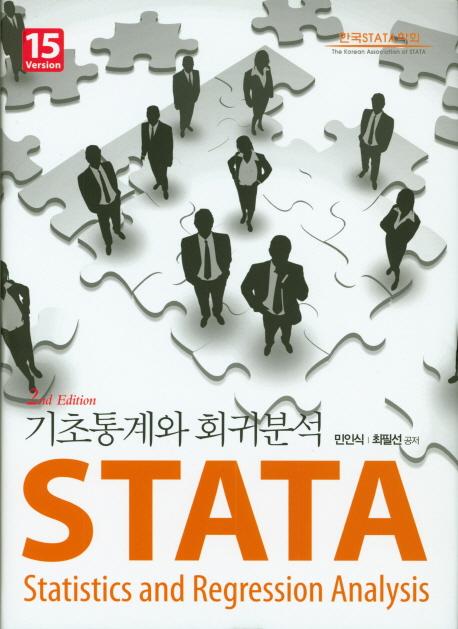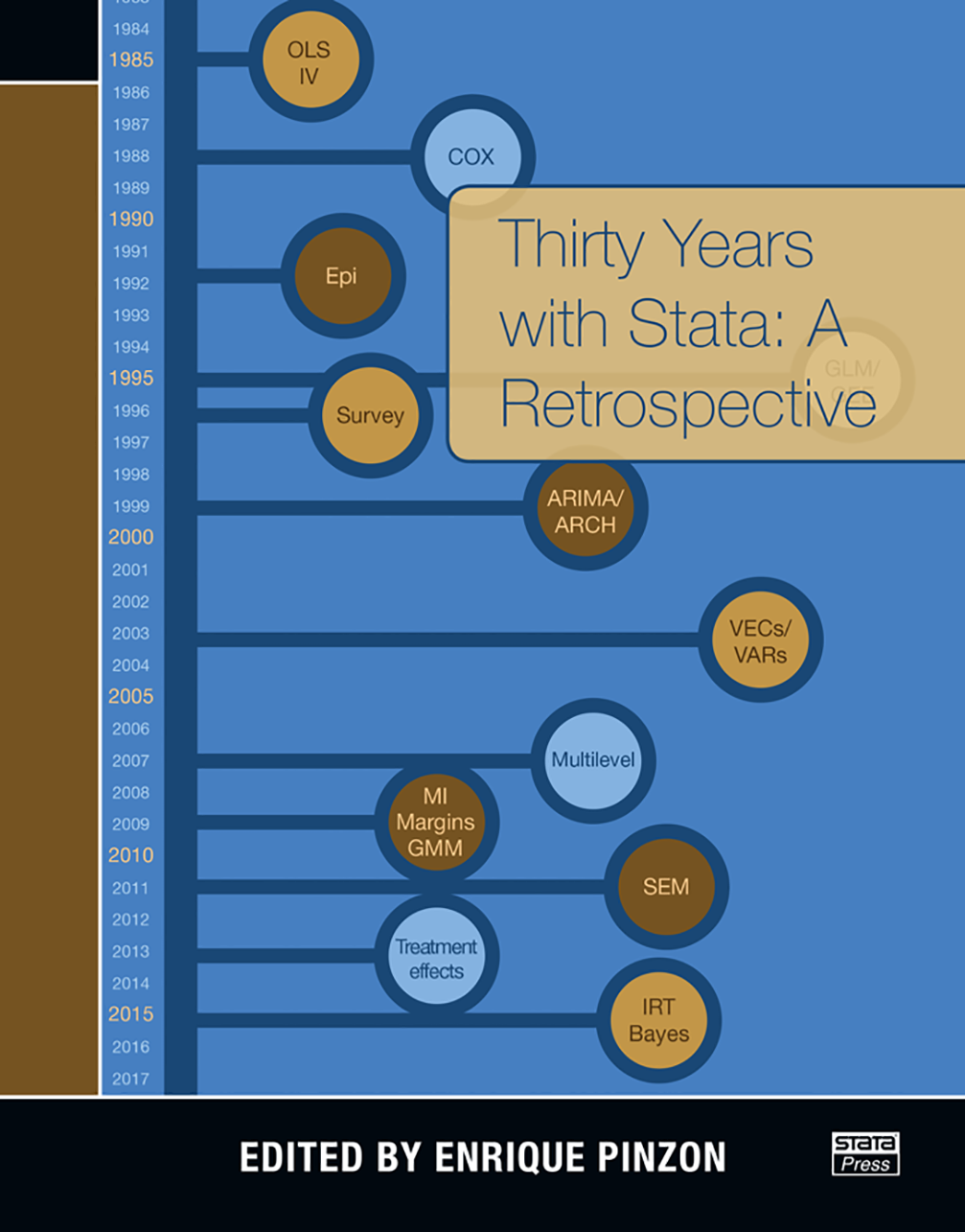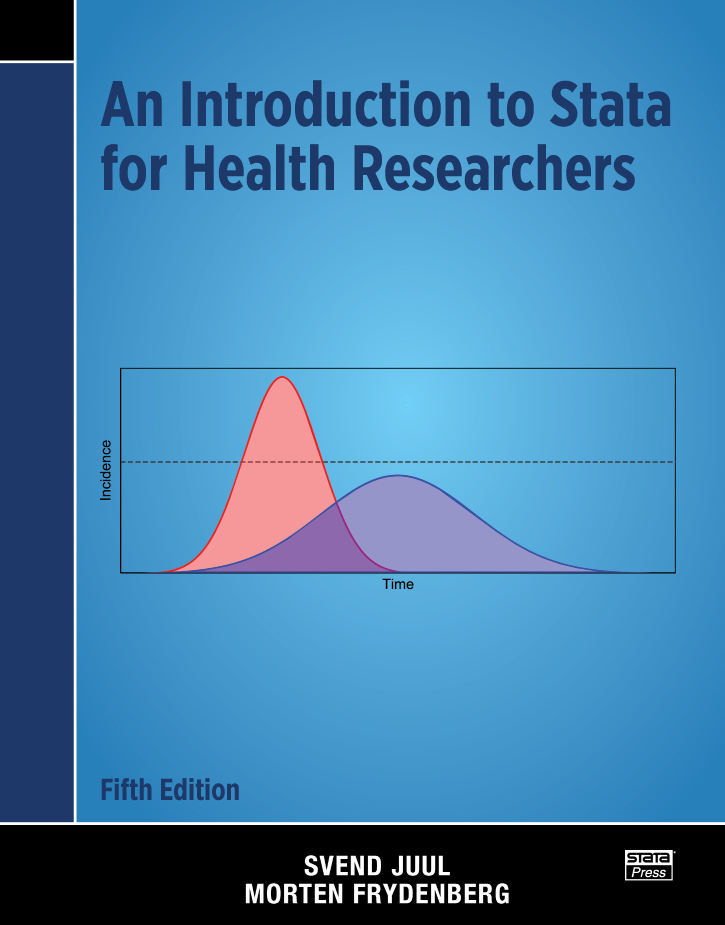
The Mata Book: A Book for Serious Programmers and Those Who Want to Be
93,000원
Author: William W. Gould Publisher: Stata Press Copyright: 2018 ISBN-13: 978-1-59718-263-8 Pages: 428; paperback
Author index
Subject index
Errata
Download the datasets used in this book
Review from the Journal of the Royal Statistical Society: Series A (Statistics in Society)
The Mata Book: A Book for Serious Programmers and Those Who Want to Be is the book that Stata programmers have been waiting for. Mata is a serious programming language for developing small- and large-scale projects and for adding features to Stata. What makes Mata serious is that it provides structures, classes, and pointers along with matrix capabilities. The book is serious in that it covers those advanced features, and teaches them. The reader is assumed to have programming experience, but only some programming experience. That experience could be with Stata's ado-language, or with Python, Java, C++, Fortran, or other similar languages. The book covers Mata, programming, workflow, verification, and certification. As the book says, "being serious is a matter of attitude, not current skill level or knowledge".
The author of this book is William Gould, who is the designer and original programmer of Mata and Stata, and who happens to be the president of StataCorp. He is also knowledgeable about the software development process, the other main thread of this book, having been the head of development at StataCorp for over 30 years. Gould is known for being a clear writer on technical subjects.
1.2 What is Mata?
1.3 What is covered in this book
1.4 How to download the files for this book
2.2 Mata code appearing in do-files
2.3 Mata code appearing in ado-files
2.4 Mata code to be exposed publicly
3.1.2 Assignment
3.1.3 Multiple assignment
3.2.2 Complex values
3.2.3 String values (ASCII, Unicode, and binary)
3.3.2 Function I()
3.3.3 Function J()
3.3.4 Row-join and column-join operators
3.3.5 Null vectors and null matrices
3.4.2 Structures
3.4.3 Classes
3.4.4 Pointers
3.5.2 What happens when code has errors
3.5.3 The _error() abort function
4.2 The program body
4.2.2 Conditional execution statement
4.2.3 Looping statements
4.2.3.2 for
4.2.3.3 do while
4.2.3.4 continue and break
4.2.5 return
4.2.5.2 Functions returning void
5.2 Numeric and string literals
5.2.1.2 Base-2 notation
5.2.3 String literals
5.4 Operator precedence
5.5 Arithmetic operators
5.6 Increment and decrement operators
5.7 Logical operators
5.8 (Understand this ? skip : read) Ternary conditional operator
5.9 Matrix row and column join and range operators
5.9.2 Comma operator is overloaded
5.9.3 Row and column count vectors
5.11 Vector and matrix subscripting
5.11.2 List subscripting
5.11.3 Permutation vectors
5.11.3.2 Use in advanced mathematical programming
5.13 Cast-to-void operator
6.2 The forty variable types
6.2.2 Default eltype, orgtype, and therefore, variable type
6.2.3 Partial types
6.2.4 A forty-first type for returned values from functions
6.3.2 Use transmorphic for output arguments
6.3.4 How to declare pointers
7.2 Turning matastrict on and off
7.3 The messages that matastrict produces, and suppressing them
8.2 Functions can change the contents of the caller's arguments
8.2.2 How to write functions that do not unnecessarily change arguments
8.4 How to write functions that have multiple syntaxes
9.2 Developing n_choose_k()
9.3 n_choose_k() packaged as a do-file
9.3.2 How I could have packaged the code
9.3.2.2 test_n_choose_k.do
9.4.2 nchooseki.ado
9.4.3 test_nchooseki.do
9.4.4 Mata code inside of ado-files is private
9.5.1.2 test.do
9.5.1.3 hello.mata
9.5.1.4 n_choose_k.mata
9.5.1.5 test_n_choose_k.do
9.5.3 Deleting libraries
10.2 You must define structures before using them
10.3 Structure jargon
10.4 Adding variables to structures
10.5 Structures containing other structures
10.6 Surprising things you can do with structures
10.7 Do not omit the word scalar in structure declarations
10.8 Structure vectors and matrices and use of the constructor function
10.9 Use of transmorphic with structures
10.10 Structure pointers
11.2 Self-threading code
11.3 Linear-regression system lr*() version 1
11.3.2 The calculations to be programmed
11.3.3 lr*() version-1 code listing
11.3.4 Discussion of the lr*() version-1 code
11.3.4.2 Assume subroutines
11.3.4.3 Learn about Mata's built-in subroutines
11.3.4.4 Use of built-in subroutine cross()
11.3.4.5 Use more subroutines
11.4.2 The lr*() version-2 code
11.4.3 lr*() version-2 code listing
11.4.4 Other improvements you could make
11.5.2 Adding lr*() to the lmatabook.mlib library
12.1.2 Classes contain member functions
12.1.3 Member functions occult external functions
12.1.4 Members—variables and functions—can be private
12.1.5 Classes can inherit from other classes
12.1.5.2 Subclass functions occult superclass functions
12.1.5.3 Multiple inheritance
12.1.5.4 And more
12.3 The this prefix
12.4 Should all member variables be private?
12.5 Classes with no member variables
12.6 Inheritance
12.6.2 Final functions
12.6.3 Polymorphisms
12.6.4 When to use inheritance
13.2 LinReg in use
13.3 LinReg version-1 code
13.4 Adding OPG and robust variance estimates to LinReg
13.4.2 Aside on numerical accuracy: Symmetric matrices
13.4.3 Finishing the code
13.6 Certifying LinReg version 2
13.7 Adding LinReg version 2 to the lmatabook.mlib library
14.2 Stata's macros
14.3 Using macros to create new types
14.4 Macroed types you might use
14.4.2 The Code type
14.4.3 Filehandle
14.4.4 Idiosyncratic types, such as Filenames
14.4.5 Macroed types for structures
14.4.6 Macroed types for classes
14.4.7 Macroed types to avoid name conflicts
15.2 How to define constants
15.3 How to use constants
15.4 Where to place constant definitions
16.2 Using class AssociativeArray
16.3 Finding out more about AssociativeArray
17.2 The idea
17.3 Design
17.3.2 The design goes bad
17.3.3 Fixing the design
17.3.3.2 Sketches of class's multiplication functions
17.3.5 Design shortcomings
17.5 Certification script
18.2 Making overall timings
18.2.2 Timing T2, SpMat R=RR
18.2.3 Timing T3, SpMat R=SR
18.2.4 Timing T4, SpMat R=RS
18.2.5 Timing T5, SpMat R=SS
18.2.6 Call a function once before timing
18.2.7 Summary
18.3.2 Make a copy of the code to be timed
18.3.3 Make a do-file to run the example to be timed
18.3.4 Add calls to timer_on() and timer_off() to the code
18.3.5 Analyze timing results
18.4.2 Aside
18.4.2.2 Advanced use of pointers
18.5.0.4 Sketching subroutine cols_of_row()
18.5.1.2 // NotReached comments
18.5.1.3 Back to converting sketches
18.6.2 Running certification
A.2 Ways to structure code
A.3 Accessing Stata's data from Mata
A.4 Handling errors
A.5 Making the calculation and displaying results
A.6 Returning results
A.7 The Stata interface functions
A.7.2 Modifying Stata's data
A.7.3 Accessing and modifying Stata's metadata
A.7.4 Changing Stata's dataset
A.7.5 Accessing and modifying Stata macros, scalars, matrices
A.7.6 Executing Stata commands from Mata
A.7.7 Other Stata interface functions
B.2 Complex values and literals
B.3 Complex scalars, vectors, and matrices
B.4 Real, complex, and numeric eltypes
B.5 Functions Re(), Im(), and C()
B.6 Function eltype()
C.2 Treatment of semicolons
C.3 Nested comments
C.4 Argument passing
C.5 Strings are not arrays of characters
C.6 Pointers
C.6.2 Pointers to new objects, allocation of memory
C.6.3 The size and even type of the object may change
C.6.4 Pointers to new objects, freeing of memory
C.6.5 Pointers to subscripted values
C.6.6 Pointer arithmetic is not allowed
C.8 Mata code aborts with error when C would crash
D.2 Creating three-dimensional arrays




